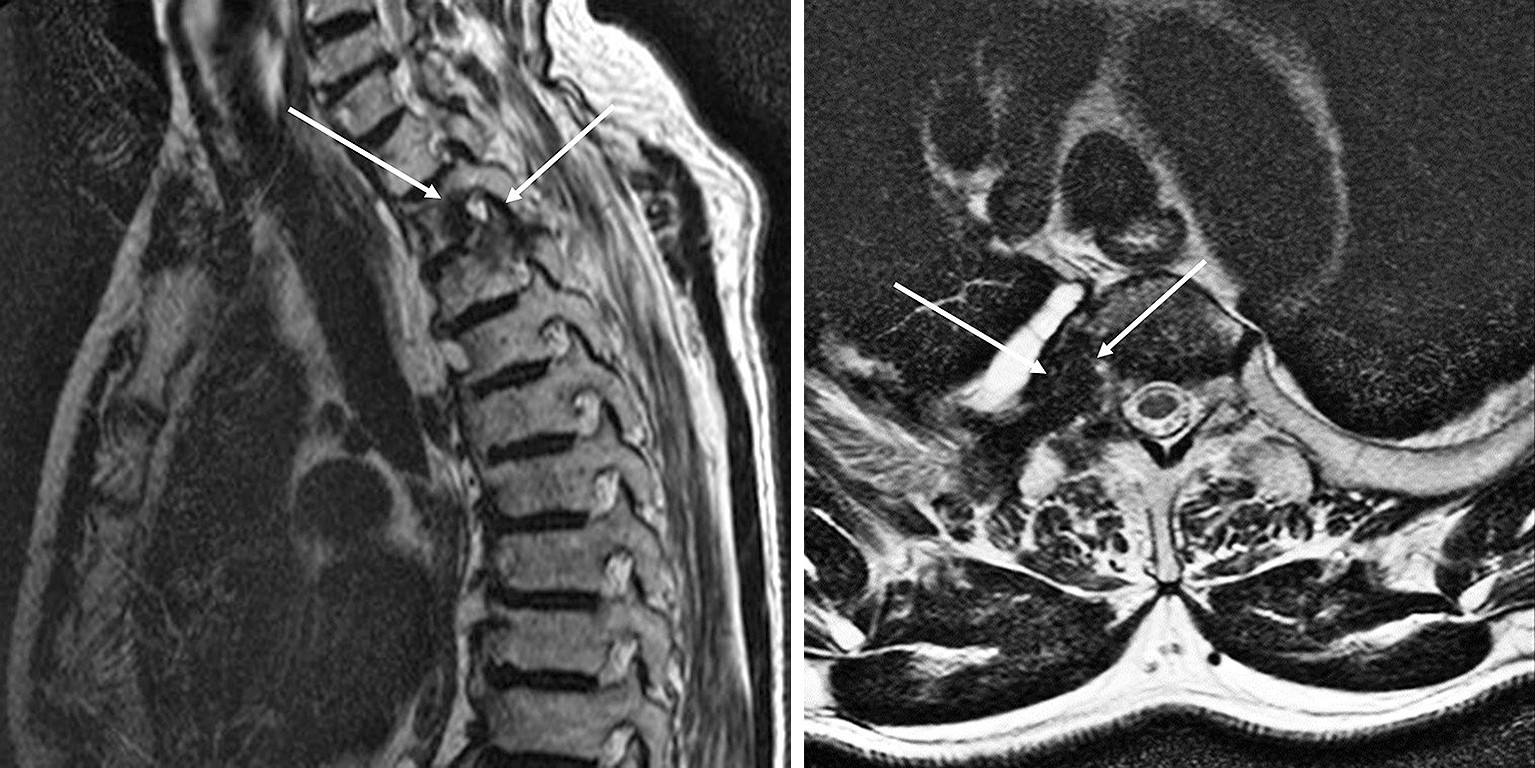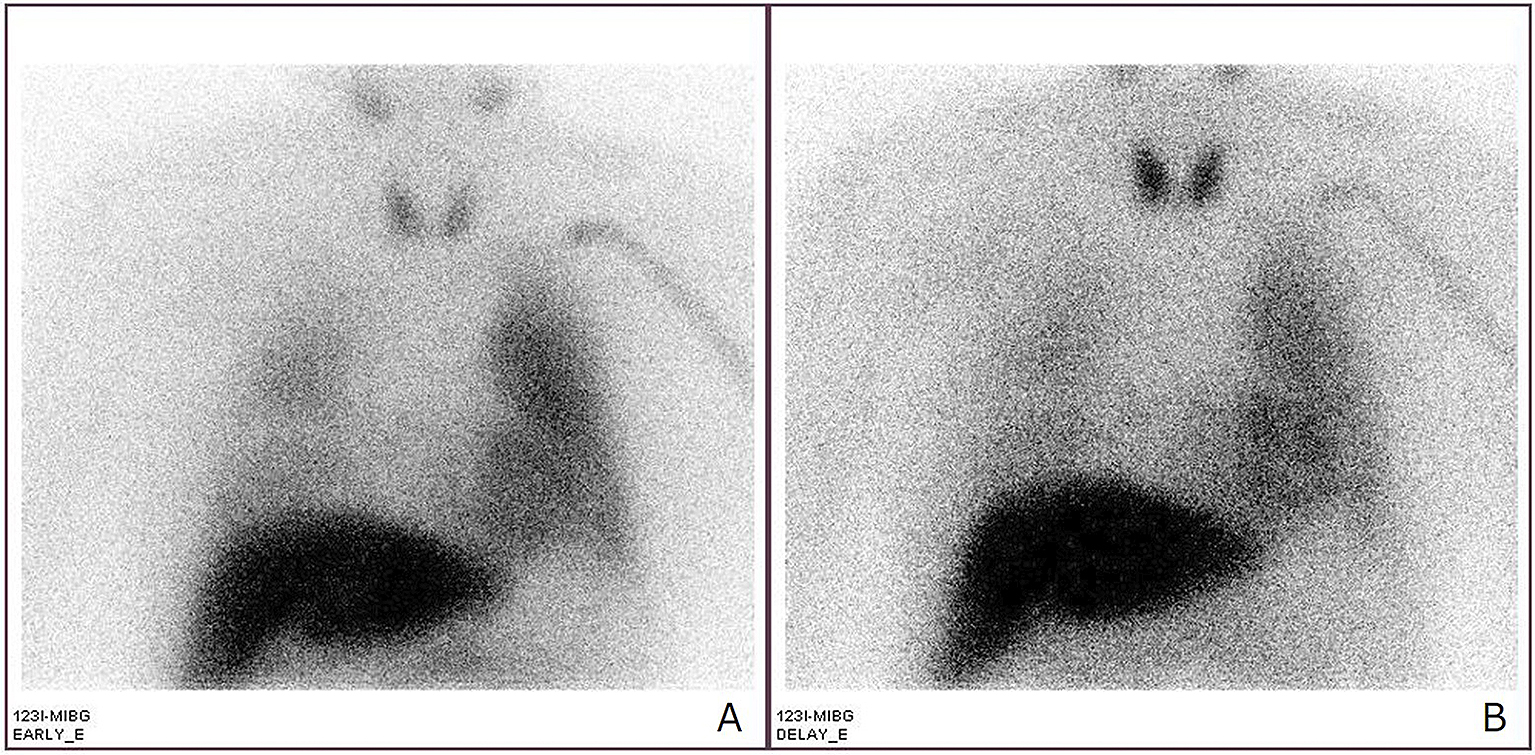Corresponding author: Yuji Tanaka, yutanaka-gif@umin.net
DOI: 10.31662/jmaj.2018-0065
Received: January 9, 2019
Accepted: May 20, 2019
Advance Publication: July 8, 2019
Published: September 4, 2019
Cite this article as:
Tanaka Y, Satomi K. Cardiac Sympathetic Hyperactivity of Lung Cancer-Associated Harlequin Syndrome. JMA J. 2019;2(2):190-191.
Key words: Cardiac sympathetic hyperactivity, Harlequin syndrome, Lung cancer, [123I]-metaiodobenzylguanidine scintigraphy, Metastatic tumor
A 79-year-old man with lung cancer, who was receiving chemotherapy, developed left-sided flushing and excessive sweating on his face, shoulder, and upper limb in response to exercise. Neurological examinations showed hypohidrosis on the right side of his face. He developed hypertension with tachycardia. Magnetic resonance imaging of the thoracic spine showed tumor invasion in the intervertebral foramen (Th2-3) (Figure 1). He was diagnosed with metastatic lung cancer that caused symptomatic harlequin syndrome by impairing the preganglionic sympathetic neuron (Th2-3). Cardiac [123I]-metaiodobenzylguanidine scintigraphy showed a normal early-phase heart-to-mediastinum ratio (2.50; reference range, 1.9-3.0) and an elevated washout rate (37.25%; reference range, 0%-34%) (Figure 2).


Although no report has described the cardiac sympathetic function of harlequin syndrome, our patient likely presented with cardiac sympathetic hyperactivity, as indicated by the increased washout rate (1), (2). This case showed two important issues: harlequin syndrome may be caused by tumors and patients with harlequin syndrome may exhibit cardiac sympathetic hyperactivity.
None
YT wrote the manuscript. KS supervised all procedures.
This manuscript is a case report.
Informed consent was obtained from the patient.
Wieland DM, Brown LE, Rogers WL, et al. Myocardial imaging with a radioiodinated norepinephrine storage analog. J Nucl Med. 1981;22:22-31.
Sisson JC, Shapiro B, Meyers L, et al. Metaiodobenzylguanidine to map scintigraphically the adrenergic nervous system in man. J Nucl Med. 1987;28:1625-36.